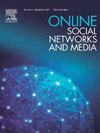建模和模拟干预措施对社交媒体中毒性传播的影响
Q1 Social Sciences
引用次数: 0
摘要
社交媒体平台上流行的恶意言论构成了一个重大问题。深入了解导致毒性的因素对于制定有效的策略来减轻毒性至关重要。在这项工作中,我们扩展和评估了部分控制SEIQR(易感、暴露、感染、隔离、恢复)流行病学模型,包括政府干预和意识计划。该模型纳入了不同的感染群体,中度和高度感染用户,并用于研究每个用户对毒性整体传播的影响。我们评估了无毒后平衡点、繁殖数(R0)、存在唯一性和稳定性点。我们使用拉丁超立方抽样-偏秩相关系数(LHS-PRCC)方法进行模型敏感性分析。为了进行数据拟合分析,我们检查了与covid -19相关的推文数据。我们研究了所提出的数值方案的复杂性,为分析和理解在线毒性传播提供了一个强大的框架。我们进行了模拟,以阐明政府干预和公众意识计划对网络毒性传播的流行和动态的影响。该研究的主要成就是该模型将错误率降低到0.0011。其特点是减少了从网络中删除用户的需要。该模型不仅提高了准确性,而且保持了更大的用户群,表明了一种高效的、以用户为中心的策略。结果表明,意识项目和政府干预对于管理和减轻网络毒性传播至关重要。这项研究将极大地帮助网络提供商和政策制定者识别受感染的用户,从而减少有毒对话。本文章由计算机程序翻译,如有差异,请以英文原文为准。
Modeling and simulation of interventions’ effect on the spread of toxicity in social media
The prevalence of toxicity on social media platforms constitutes a significant issue. Gaining insights into the factors that contribute to toxicity is essential for devising effective strategies to mitigate it. In this work, we extend and evaluate fractional control SEIQR (Susceptible, Exposed, Infected, Quarantined, Recovered) epidemiological modeling incorporating government interventions and awareness programs. The model incorporates different infected groups, moderate and high infected users, and is used to investigate the influence by each user on the overall spread of toxicity. We have evaluated the toxic post-free equilibrium point, the reproduction number , the existence-uniqueness, and the stability point. We performed the model sensitivity analysis using the Latin Hypercube Sampling-Partial Rank Correlation Coefficient (LHS-PRCC) method. For data fitting analysis, we examined data from COVID-19-related tweets. We examine the intricacies of the proposed numerical scheme, providing a robust framework for analyzing and comprehending online toxicity spread. Simulations were conducted to elucidate the effects of government interventions and public awareness programs on the prevalence and dynamics of online toxicity spread. The study’s primary accomplishment is the model’s reduction of the error rate to 0.0011. This is distinguished by the reduced need to remove users from the network. The model not only improves accuracy but also maintains a larger user base, indicating an efficient, user-centric strategy. The results suggest that both awareness programs and government interventions are crucial for managing and mitigating online toxicity spread. This study will significantly assist network providers and policymakers to identify the infected users, thereby reducing toxic conversations.
求助全文
通过发布文献求助,成功后即可免费获取论文全文。
去求助
来源期刊

Online Social Networks and Media
Social Sciences-Communication
CiteScore
10.60
自引率
0.00%
发文量
32
审稿时长
44 days
 求助内容:
求助内容: 应助结果提醒方式:
应助结果提醒方式:


